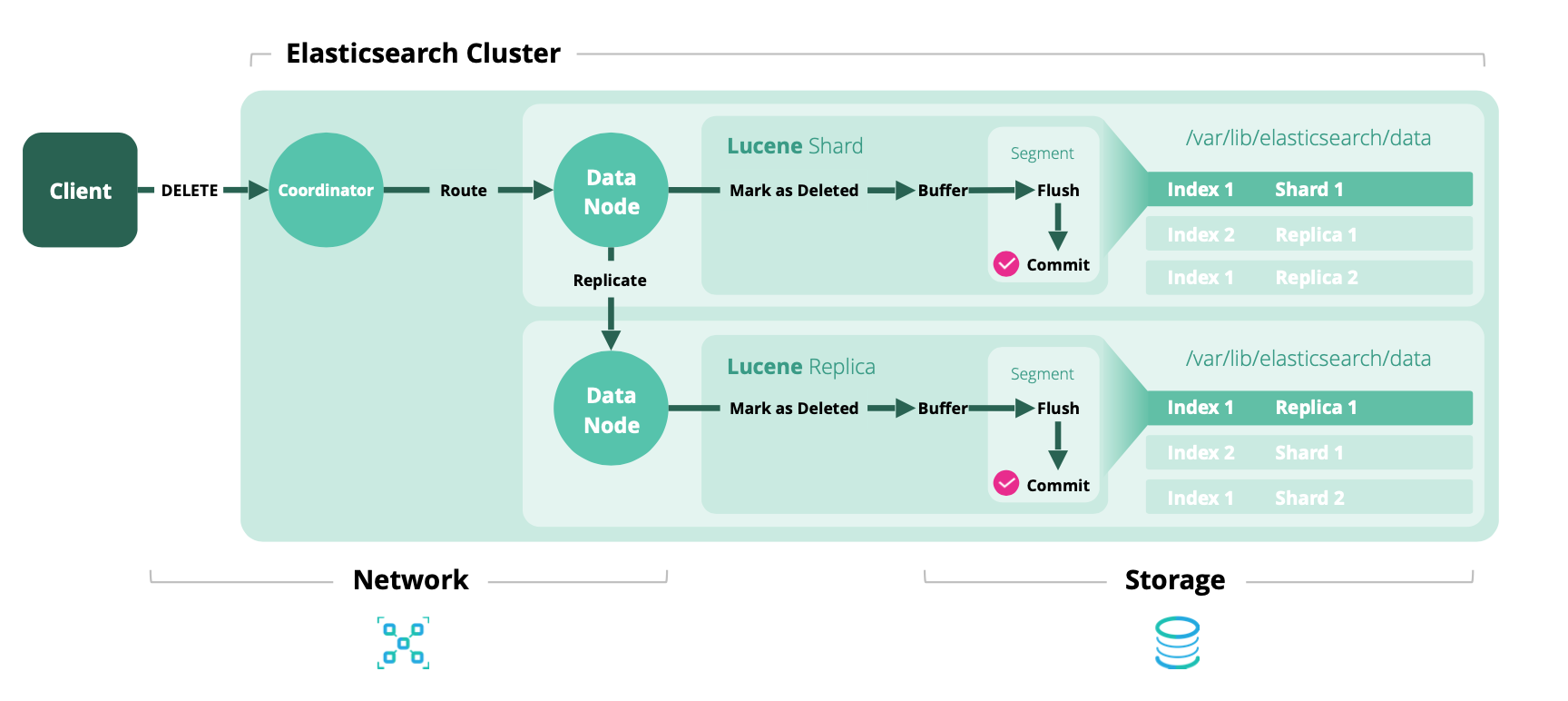How is a document deleted from Elasticsearch? The following diagram shows data flow behinds the scene of deleting a single document.
Step 1: The client makes a request to delete a document from the cluster, a coordinator node in the cluster takes the request to process.
Step 2: Based on shard information and the document ID, the coordinator node routes the delete request to a data node which contains primary shard that stored the document.
Step 3: The data node doesn’t delete the document immediately, it marks the document as deleted then adding it to the memory buffer and appending it to the transaction log. At this time, the document is unsearchable.
When the buffer fills up, the changes are written to a segment and the buffer is clear. In the meantime, the transaction log still keeps the deleted documents until it gets too big, a full commit is performed. The changes are flushed to disk, the document is deleted permanently.
If replication is enabled for the index, the replication data process gets started. This data node sends the delete request to a data node which contains replicas shards of the index. The whole deleting process here will be done on that node to delete the document from the replica shards completely.
